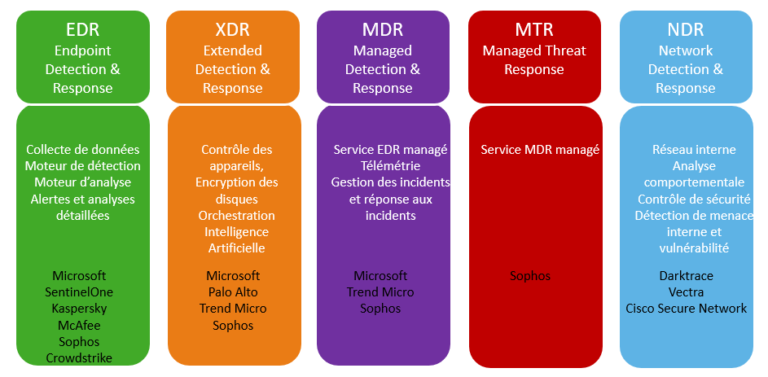#Cybersecurity

03/07/2024
#Cybersecurity

Cyberattacks have become commonplace in a connected world over the past decade. In 2021, no less than 52% of companies worldwide were affected by a ransomware attack. 81% of them had cybersecurity insurance, which helped mitigate the consequences of the attack before any data could leak.
Conventional protections are no longer sufficient to combat these types of attacks. Hackers continue to improve and refine their methods, making it increasingly difficult for their victims to detect looming threats.
Discover how Artificial Intelligence, combined with human expertise, can reduce the risk of cyberattacks.
Hackers target companies with tailored malware designed to exploit specific vulnerabilities in the targeted organization’s systems. These are known as single-use malwares. These attacks are becoming more sophisticated, and the attack surface is expanding, allowing malware to target all connected devices (PCs, servers, mobiles, tablets, etc.).
To effectively combat these new methods, it is essential to achieve a certain level of performance based on four criteria:
“There will always be a gray area due to the complexity of attacks that antivirus software is unable to analyze, the ‘gap.'”
To protect against these attacks, a necessary solution is the use of EDR (Endpoint Detection and Response).
EDR is a technology for endpoint devices that enables a process of:
Its goal is to effectively respond to an existing threat.
But that’s not enough. Having a good antivirus is already a step in the journey toward complete protection, but it won’t have all the necessary reflexes. If an antivirus faces a threat, it will either consider it safe or block it if it deems it malicious. However, there will always be a gray area due to the complexity of attacks that antivirus software is unable to analyze, the ‘gap.’
This is where EDR comes into play! It analyzes machine logs and alerts to precisely determine what could help make a decision.
EDR is an automated process that requires human intervention. Once it detects suspicious elements, they will be ranked in order of importance. If a suspicious element is categorized as red, a human must focus on resolving it.
This is where Managed Detection and Response (MDR) comes into play. MDR is EDR managed by a team of experts. When an EDR detects suspicious elements, a person will investigate further to determine whether it is indeed a threat or not. The idea is to meet customer demand for EDR.

Artificial Intelligence has many roles that are difficult for human intelligence to fulfill. For example, AI can process large quantities of data to detect potentially malicious activities, unlike human intelligence, which would analyze activities one by one.
Furthermore, AI can make correlations based on behaviors commonly associated with malicious activity, whereas human intelligence may adapt its investigative strategy based on the attacker’s motivations.
Most importantly, AI can take almost real-time automated actions to block or terminate confirmed malicious activities, whereas human intelligence identifies weak signals to discover new threats and relies on experience for decision-making.
Artificial Intelligence, still undervalued in some respects, has a significant role to play in detecting increasingly sophisticated threats.
Do you have the right tools and expertise to combat cyber threats?
Discover Sophos‘ 2022 report on interconnected threats targeting an interdependent world!
Learn more about MDR